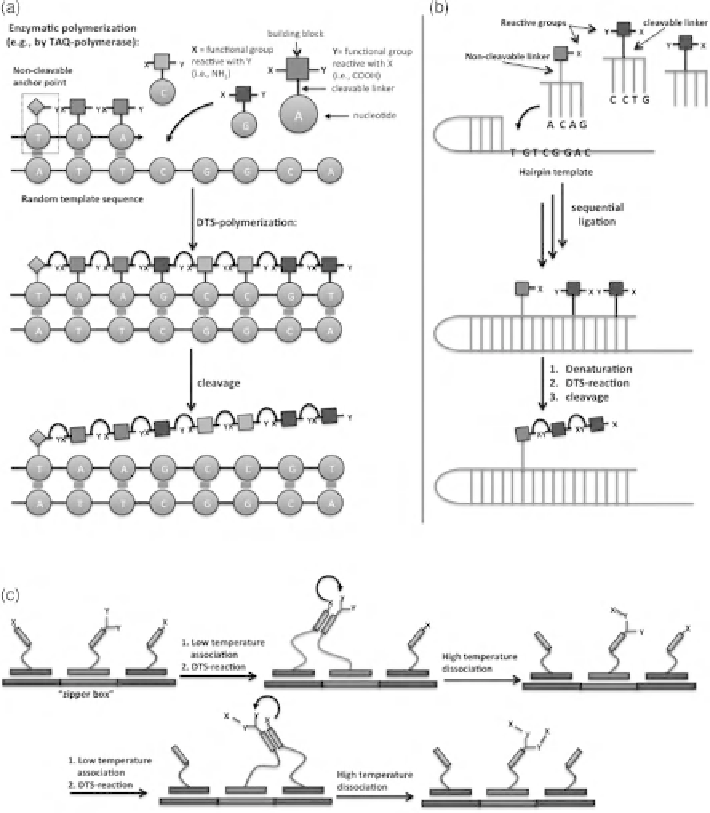Biomedical Engineering Reference
In-Depth Information
FIGURE 11.17
Nuevolution chemetic strategies for DNA-encoded chemical library assem-
bly. (a) Random DNA sequences serve as a template for the enzymatic incorporation of unnat-
ural DNA-nucleotide building blocks (each displaying two functional moieties and a cleavable
linker). By virtue of the proximity effect, adjacent reactive groups polymerize. Linker cleavage
yields to the final double-stranded DNA-encoded library. (b) DNA hairpin primes the anneal-
ing of short complementary DNA-conjugate reagents. Ligation and denaturation of the hairpin
sequence allow DNA-templated reactions to occur. Cleavage of the linkers generates the final
DNA-conjugate products. (c) Zipper-box approach: Multiple DNA-conjugate reagents, each
containing two hybridization domains, are consecutively annealed on a complementary single-
stranded DNA template. Association/dissociation of two adjacent DNA-conjugate reagents
enables DTS reactions to take place. If a bifunctional DNA-linked moiety is included, the iter-
ation of the association/dissociation cycle allows multiple one-pot DNA-templated reactions
to occur on a single DNA-linked core structure.

